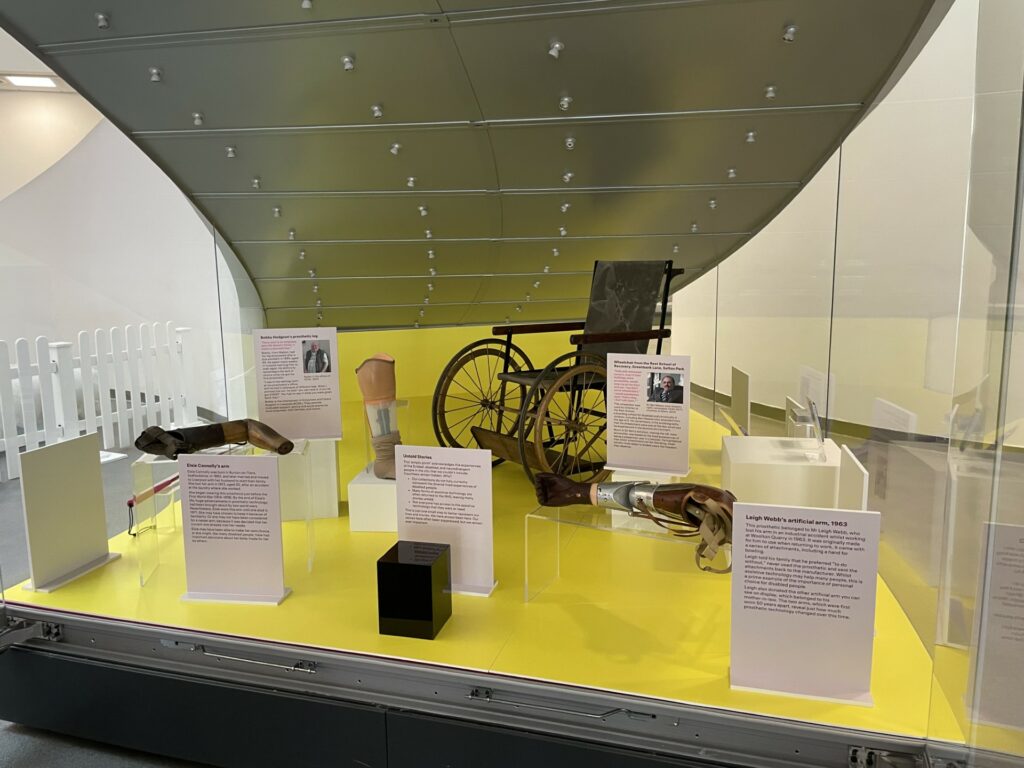Engage with any popular discourse on disability and the word ‘overcome’ will turn up. It can be both a blessing and a curse to the disabled community.
On the one hand what has become known as ‘inspiration porn’ does not do us any favours. When a wheelchair user competes in 12 different marathons around the globe in a year the narrative of overcoming turns to ‘look what you can achieve if you only try’ – often impacting other disabled people negatively.
On the other hand experiencing disability does present challenges, and disabled people do have to make adaptations and innovations in order to ensure they can access the world around them.. Developments like the wheelchair are ancient in origin, enabling people with mobility impairments to get about and engage with society. Sign languages and non-verbal communications are also a time-tested development, written about by Plato.
Assistive Technology, curated by Iris Sirendi and the Disability History Co-Production Group, looks at these assistive technologies, past and present. It presents assistive technologies honestly and through the genuine human stories and lived experience of disabled people living with canes or sticks, sensory toys and aids, and adaptive phone apps like screen readers. It puts the people first.

The posing of difficult questions is an incredible value of our museums, and when you work with community co-production groups you get the depth and complexity of issues that may be missing from a curatorial interpretation absent of lived experience. In this case, for example, are assistive technologies actually making the world more accessible for disabled people?
It seems an open-and-shut case until you consider the issues of getting your wheelchair on-and-off a train with few, if any, station staff able to assist you. It may seem a no-brainer until you are the person who uses hearing aids that are intended to make the world a more accessible place for you but actually just adjust your body to better fit how the world around you works. Assistive technologies for my own disability, autism, consist of devices and adaptations still intended to shut us out from the ‘real’ world – we cover our ears, shield our eyes and, if we’re really lucky, have special rooms to remove us from a society that persists in not adapting itself to be less overwhelming.
Technologies can be hugely enabling, providing relief, comfort, freedom and independence to disabled people. But they are not replacement for a society that is accepting, enabling and adaptive to the needs of disabled people.
As Iris is so keen to point out – it is about putting the people first.
‘Assistive Technology: What it Means to Us’ was on at the Museum of Liverpool from 14th November 2023 to 14th January 2024. A selection of disability related objects from National Museums Liverpool’s collections are available to view on our online collection by following this link. You can also go to National Museums Liverpool’s online Disability History Hub here; and the museum will be unveiling a new disability history trail, curated by Iris Sirendi and the Disability History Co-Production Group in early 2024.






